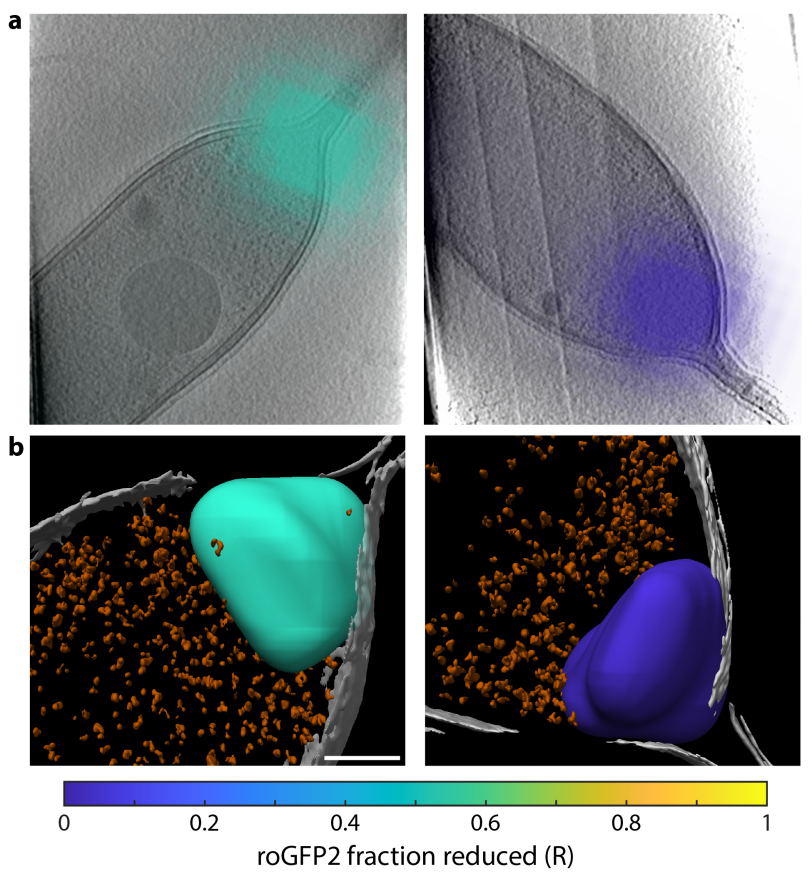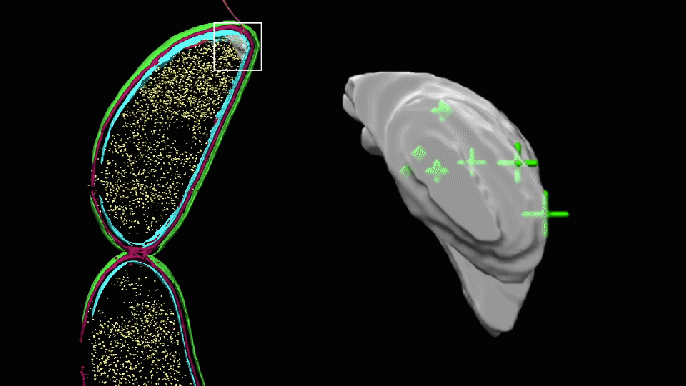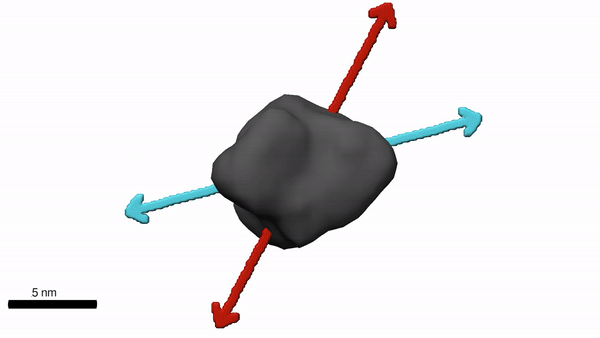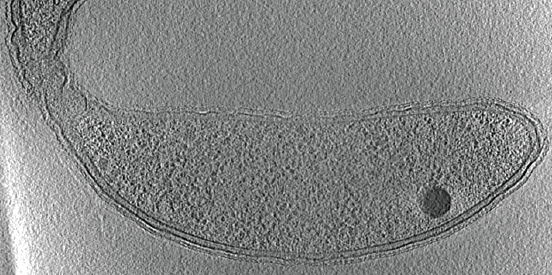Biosensor cryogenic correlative light and electron microscopy
Connecting physiological states to structures
When looking at cryogenic electron tomography (Cryo-ET) reconstructions it is often hard to interpret the structures being observed due to a lack of physiological contextual information. To the right is an example Cryo-ET reconstruction of a freshwater bacterium called Caulobacter crescentus. Are these the structures associated with a sick or healthy cell? Is this cell preparing to divide? Is the metabolic state of this cell active or resting? These are things that cannot be discerned from Cryo-ET alone. However, through the use of fluorescent biosensors imaged under cryogenic conditions, we can correlate this information with these structures.
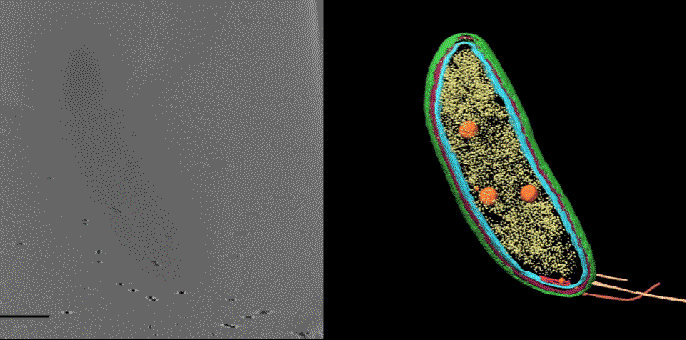
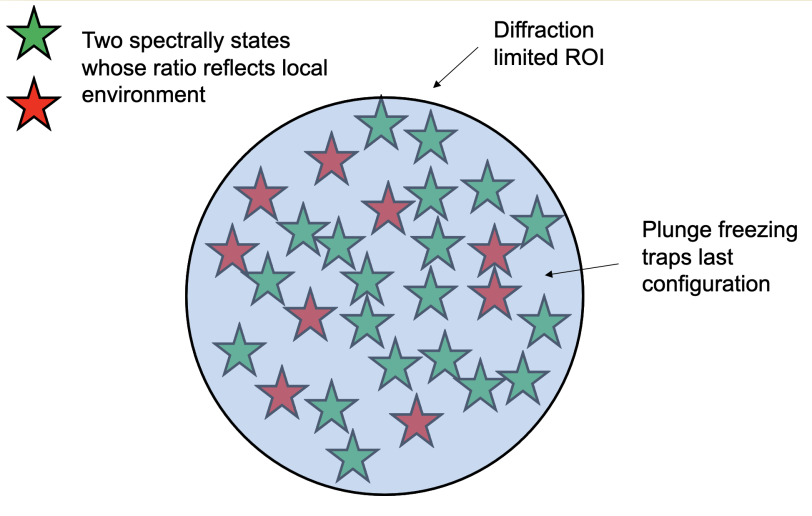
Fluorescence biosensors are special fluorescent labels that have been engineered to change their photophysical properties in response to specific aspects of the local environment. There are hundreds of genetically encoded fluorescent biosensors to choose from that have been sensitized to a plethora of different environmental observables. A wonderful database curated by UCSD and the Jin Zhang lab can be found here. These biosensors work by many different mechanisms, some more compatible with cryogenic conditions than others. Those that work by ratiometric means will likely work well under cryogenic conditions because once frozen the equilibrium of states is locked in, see the figure to the left.
Once the biosensor is validated and calibrated under cryogenic conditions the physiological information it contains can be correlated with CryoET reconstructions. This gives key insight into how the observed structures should be interpreted. The image to the right shows our first proof-of-principle demonstration of this approach in C. crescentus, where the polar organizing protein has been labeled with roGFP, a redox sensitive form of GFP. There is a slight redox change during the cell cycle of C. crescentus, which can be recovered using this approach. Future work will aim to expand the suite of biosensors known to function under cryogenic conditions, and relate high-resolution structures with physiological conditions.
Key publications from our group:
Initial demonstration of Biosensor CryoCLEM using ratiometric labels.
